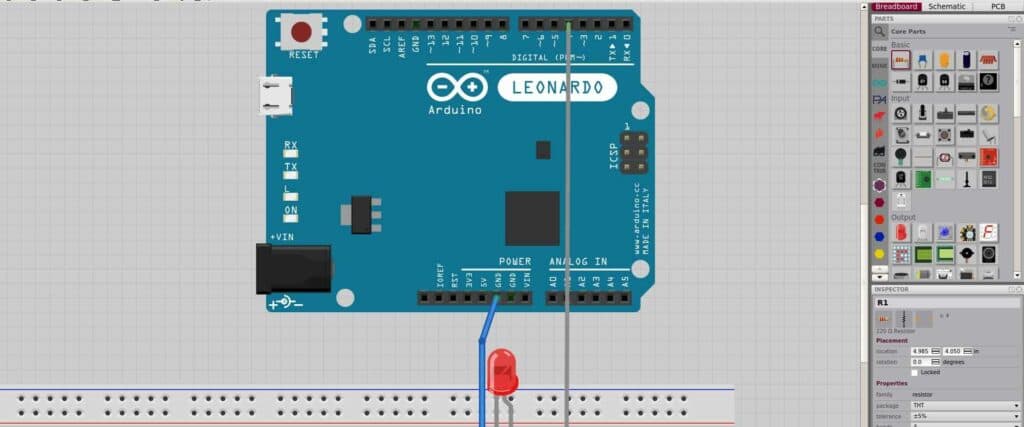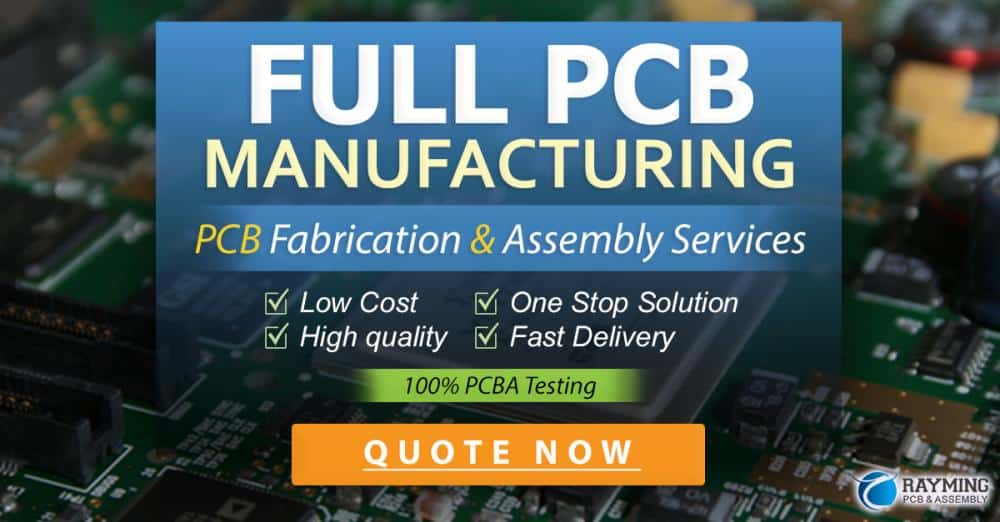Silkscreen circuit boards are an essential component of modern electronic devices. They are used to create the layout of the circuit and to identify the various components that make up the board. Silkscreen circuit boards are created by printing a layer of ink onto the board, which is then cured to create a durable, long-lasting surface.
One of the primary benefits of using silkscreen circuit boards is their ability to make it easier to identify the various components on the board. This is particularly important when it comes to troubleshooting and repairing electronic devices. By using silkscreen circuit boards, engineers and technicians can quickly and easily identify the various components on the board, making it much easier to diagnose and fix any issues that may arise.
Another benefit of using silkscreen circuit boards is their ability to improve the overall aesthetic of the device. By using silkscreen printing, manufacturers can create custom designs and logos on the board, giving the device a unique and professional look. This is particularly important for consumer electronics, where the appearance of the device can be just as important as its functionality.
Silkscreen Circuit Board Basics
What is a Silkscreen Circuit Board?
A silkscreen circuit board is a type of printed circuit board (PCB) that features a layer of ink on top of the copper traces and pads. This layer of ink is called the silkscreen layer and is used to add text, graphics, and other markings to the board. Silkscreen circuit boards are commonly used in electronics manufacturing to label components, indicate polarity, and provide other important information.
How is a Silkscreen Circuit Board Made?
Silkscreen circuit boards are made using a similar process to other types of PCBs. The first step is to design the circuit board layout using specialized software. This design is then printed onto a sheet of transparent film, which is used to create a photomask. The photomask is then used to expose a photosensitive layer on the copper-clad board, which is then etched to remove the unwanted copper.
Once the copper has been etched away, the board is cleaned and the silkscreen layer is added. The silkscreen layer is typically applied using a screen printing process, where ink is forced through a stencil onto the board. The ink is then cured using heat or UV light to ensure that it adheres to the board and is durable enough to withstand handling and assembly.
Overall, silkscreen circuit boards are a popular choice for electronics manufacturers due to their ability to provide important information in a clear and easy-to-read format. They are also relatively simple to manufacture and can be customized to meet the unique needs of a particular project.
Advantages of Silkscreen Circuit Boards
Higher Quality and Precision
Silkscreen circuit boards offer a higher level of quality and precision when compared to other circuit board manufacturing methods. The silkscreen process allows for the creation of fine, detailed lines and text that are easy to read and follow. This makes it easier to identify components and trace circuits, which can be especially important when troubleshooting or repairing a circuit board.
Silkscreen circuit boards are also less prone to errors and defects, as the silkscreen process ensures that the design is accurately transferred onto the board. This results in a more reliable and consistent end product.
Cost-Effective Mass Production
Silkscreen circuit board manufacturing is a cost-effective method for producing large quantities of circuit boards. The process is highly automated, allowing for efficient and consistent production. This means that silkscreen circuit boards can be produced in large quantities at a lower cost per unit than other manufacturing methods.
In addition, the silkscreen process is highly scalable, meaning that it can be easily adapted to meet changing production demands. This makes it an ideal manufacturing method for businesses that need to produce large quantities of circuit boards on a regular basis.
Easy Component Identification
Silkscreen circuit boards make it easy to identify components and trace circuits. The silkscreen process allows for the addition of text and symbols that indicate the location and function of each component on the board. This makes it easier to assemble and test the board, as well as troubleshoot and repair any issues that may arise.
In addition, the silkscreen process can be used to add logos, branding, and other design elements to the board. This can be especially useful for businesses that want to create a unique and recognizable product.
Overall, silkscreen circuit board manufacturing offers a number of advantages over other manufacturing methods. From higher quality and precision to cost-effective mass production and easy component identification, silkscreen circuit boards are an ideal choice for businesses that need to produce large quantities of reliable and consistent circuit boards.
Applications of Silkscreen Circuit Boards
Silkscreen circuit boards have a wide range of applications in various industries. Here are some of the most common applications of silkscreen circuit boards:
Consumer Electronics
Silkscreen circuit boards are widely used in consumer electronics such as smartphones, tablets, laptops, and televisions. The silkscreen layer on the circuit board allows for easy identification of components and their functions. This makes it easier for manufacturers to assemble and repair electronic devices.
Automotive Industry
The automotive industry also uses silkscreen circuit boards in various applications such as dashboard controls, engine management systems, and entertainment systems. The silkscreen layer on the circuit board allows for easy identification of components and their functions, making it easier for manufacturers to assemble and repair automotive electronics.

Medical Devices
Silkscreen circuit boards are also used in the medical industry for various applications such as patient monitoring systems, diagnostic equipment, and medical imaging devices. The silkscreen layer on the circuit board allows for easy identification of components and their functions, making it easier for medical professionals to operate and repair medical devices.
Overall, silkscreen circuit boards have a wide range of applications in various industries. The silkscreen layer on the circuit board allows for easy identification of components and their functions, making it easier for manufacturers and professionals to assemble, operate, and repair electronic devices.
Silkscreen Circuit Board Design
Design Considerations
When designing a silkscreen circuit board, there are several factors to consider to ensure that the final product meets your requirements. One of the most important considerations is the size and placement of components. It is crucial to ensure that each component is clearly labeled and easy to identify, as this will help with troubleshooting and repairs.
Another important consideration is the spacing between components. It is important to ensure that there is enough space between components to prevent any interference or short circuits. Additionally, it is important to consider the size and shape of the board, as this will impact the overall layout of the components and the silkscreen design.
Silkscreen Printing Techniques
Silkscreen printing is a popular method for adding labels and designs to circuit boards. There are several techniques that can be used when printing with silkscreen, including manual and automatic printing.
Manual printing involves using a stencil to apply the ink to the board, while automatic printing uses a machine to apply the ink. Both techniques can produce high-quality results, but automatic printing is generally faster and more efficient.
Silkscreen Ink Types
When selecting an ink for silkscreen printing, it is important to consider the type of board and the desired outcome. There are several types of inks available, including solvent-based, water-based, and UV-cured inks.
Solvent-based inks are durable and resistant to wear and tear, making them a popular choice for industrial applications. Water-based inks are environmentally friendly and easy to clean up, but may not be as durable as solvent-based inks. UV-cured inks are fast-drying and produce high-quality results, but may be more expensive than other types of inks.
Overall, designing a silkscreen circuit board requires careful consideration of several factors, including component placement, spacing, and silkscreen printing techniques and ink types. By taking the time to carefully plan and execute the design, you can ensure that your circuit board meets your requirements and functions as intended.
Silkscreen Circuit Board Manufacturing
Silkscreen Printing Process
Silkscreen printing is a popular method of printing on circuit boards. It involves using a stencil to apply ink onto the board. The stencil is made by exposing a photosensitive emulsion to light, which hardens the emulsion in the areas where light hits it. The unhardened areas are then washed away, leaving a stencil that can be used to apply ink to the board.
The ink used in silkscreen printing is typically a special type of ink that is resistant to high temperatures and chemicals. This makes it ideal for use in the harsh environment of a circuit board. The ink is applied to the board using a squeegee, which presses the ink through the stencil and onto the board.
Quality Control Measures
Quality control is an important part of silkscreen circuit board manufacturing. There are several measures that can be taken to ensure that the boards are of high quality. One such measure is to use a high-quality stencil. A good stencil will produce sharp, clean lines, which will result in a high-quality finished product.
Another important measure is to use high-quality ink. Ink that is too thin or too thick can result in poor quality printing. The ink should be tested before use to ensure that it is the correct consistency.
Common Manufacturing Issues
There are several common issues that can arise during silkscreen circuit board manufacturing. One such issue is smudging. Smudging can occur when the ink is not properly cured, or when the board is handled before the ink has had a chance to dry.
Another common issue is bleeding. Bleeding can occur when the ink is applied too thickly, or when the stencil is not properly aligned. To prevent bleeding, it is important to use a high-quality stencil and to apply the ink evenly.
In conclusion, silkscreen circuit board manufacturing is a popular method of printing on circuit boards. By following quality control measures and being aware of common manufacturing issues, it is possible to produce high-quality boards that meet the needs of the electronics industry.

Silkscreen Circuit Board Maintenance
Cleaning and Maintenance Tips
To ensure the longevity of your silkscreen circuit board, it is important to perform regular cleaning and maintenance. Here are some tips to keep your circuit board in top condition:
- Use a soft-bristled brush or compressed air to remove any dust or debris from the board.
- Avoid using harsh chemicals or abrasive cleaning tools as they can damage the silkscreen layer.
- Use a mild detergent and water solution to clean the board, and then rinse thoroughly with clean water.
- Dry the board completely before powering it on.
Troubleshooting Common Issues
Sometimes, even with regular maintenance, issues can arise with your silkscreen circuit board. Here are some common issues and their possible solutions:
| Issue | Possible Solution |
|---|---|
| Silkscreen layer peeling off | Apply a clear coat of protective spray to prevent further peeling. |
| Fading silkscreen layer | Use a UV-resistant ink for silkscreen printing. |
| Inaccurate silkscreen printing | Check the alignment of the silkscreen stencil and adjust as needed. |
| Short circuits | Inspect the board for any loose connections or damaged components. |
By following these cleaning and maintenance tips and troubleshooting common issues, you can ensure that your silkscreen circuit board remains in top condition for years to come.
Comments are closed